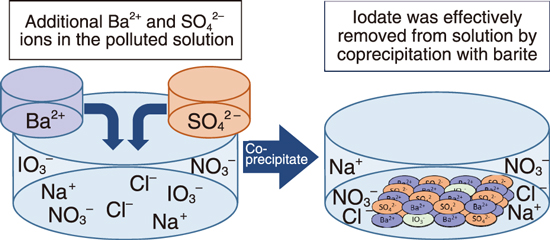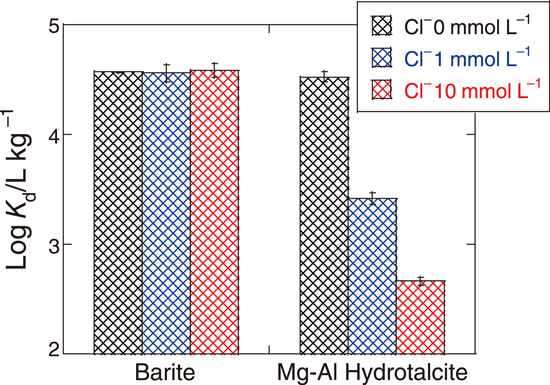
Fig.1-7 Design of IO3- coprecipitation with barite

Fig.1-8 Comparison of iodate removal between barite and Mg–Al layered double hydroxide (LDH)
Radioactive iodine (129I) is of great concern owing to its high environmental mobility and long-term radiotoxicity (129I: half-life = 1.6 × 107 years). In the environment, iodine exists in two oxidation states (−1, +5), and it is mostly dissolved in natural water and radioactive liquid wastes as iodide (I-) and iodate (IO3-). To date, the formation of AgI is the only method available for I- removal, and there is no effective method for removing IO3- from contaminated natural water and waste liquid. In the present study, we developed a new technique for removing radioactive IO3- from aqueous solutions by using barite (BaSO4). Although a variety of toxic and/or radioactive elements in the cationic form and selenium (Se) oxyanions can be removed from aqueous solutions by coprecipitation with barite, the removal of IO3- had not been investigated yet.
Barite is rapidly precipitated by mixing BaCl2 aqueous solution in Na2SO4 aqueous solution (= coprecipitation). A diagram of IO3- coprecipitation with barite is shown in Fig.1-7. This study investigated the coprecipitation of IO3- with barite and found that IO3- can be effectively removed by this method. The main parameter affecting iodate removal is the [Ba2+]/[SO42-] molar ratio in the initial aqueous solution. Results showed that iodate was effectively removed from the aqueous solution by coprecipitation when the [Ba2+]/[SO42-] ratio was high. Extended X-ray absorption fine structure analysis also indicated that the incorporated IO3- was strongly bound to the crystal lattice of barite by the substitution of the SO42- site in the structure when the IO3- concentration was low. It is believed that the charge compensation problem due to the substitution of IO3- for SO42- was achieved by the substitution of Na+ for the nearest Ba2+ because Na+, which was not detected in the barite prepared without IO3-, was detected in the IO3--bearing barite (2IO3- + 2Na+ ⇔ Ba2+ + SO42-).
Subsequently, we investigated the influence of competitive anions on IO3- removal efficiencies by comparing with adsorption on hydrotalcite-like Mg–Al layered double hydroxide (LDH). Mg–Al LDH is a well-known inorganic layered mineral with a high anion exchange capacity, and the anion is intercalated into interlayer spaces. Many papers have reported on the removal of anionic contaminants by LDH. Fig.1-8 shows the distribution coefficient (Kd) of IO3- for barite prepared under the optimum condition and that for the Mg–Al LDH with and without the addition of NaCl in the initial aqueous solution. Kd is the ratio of concentrations of a solute (in this case, IO3-) between a liquid phase and a solid phase (barite or Mg–Al LDH). The higher the Kd, the higher is the selectivity of the solute to the solid phase. The Kd of Mg–Al LDH decreased with increasing competitive Cl- concentration, while that of for barite was nearly independent of the Cl- concentrations. At an initial Cl- concentration of 10 mmol L-1, the Kd of barite was two orders of magnitude greater than that of Mg–Al LDH. Hence, the coprecipitation method using barite performs better than the conventional adsorption method using LDH for IO3- removal when competitive anions are present. IO3- was also effectively removed from aqueous solutions in the presence of NO3- and SO42-, which are also environmentally common anions. Coprecipitation with barite will be a promising tool for removing radioactive IO3- from various aqueous solutions contaminated with IO3-.
(Kohei Tokunaga)